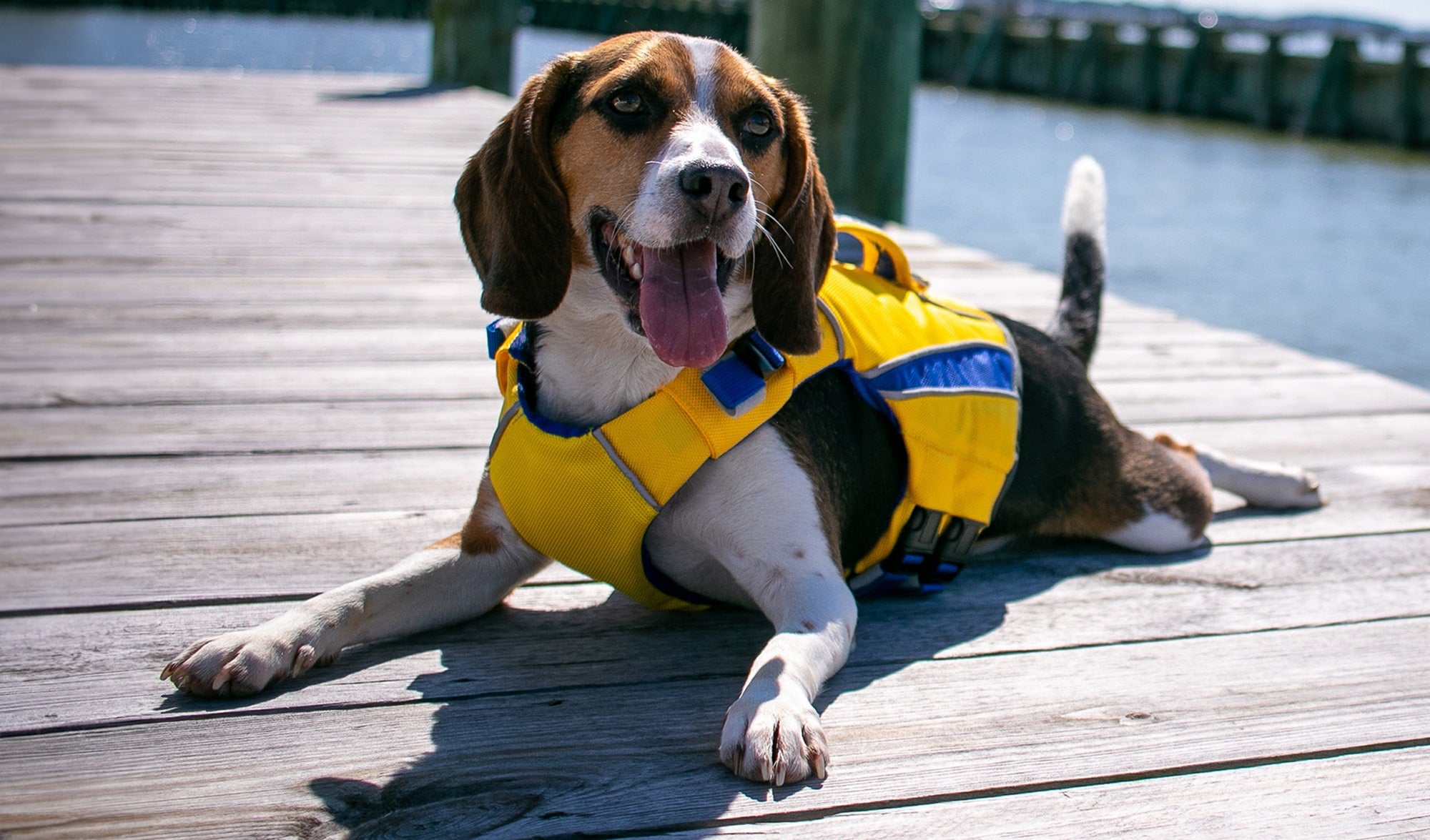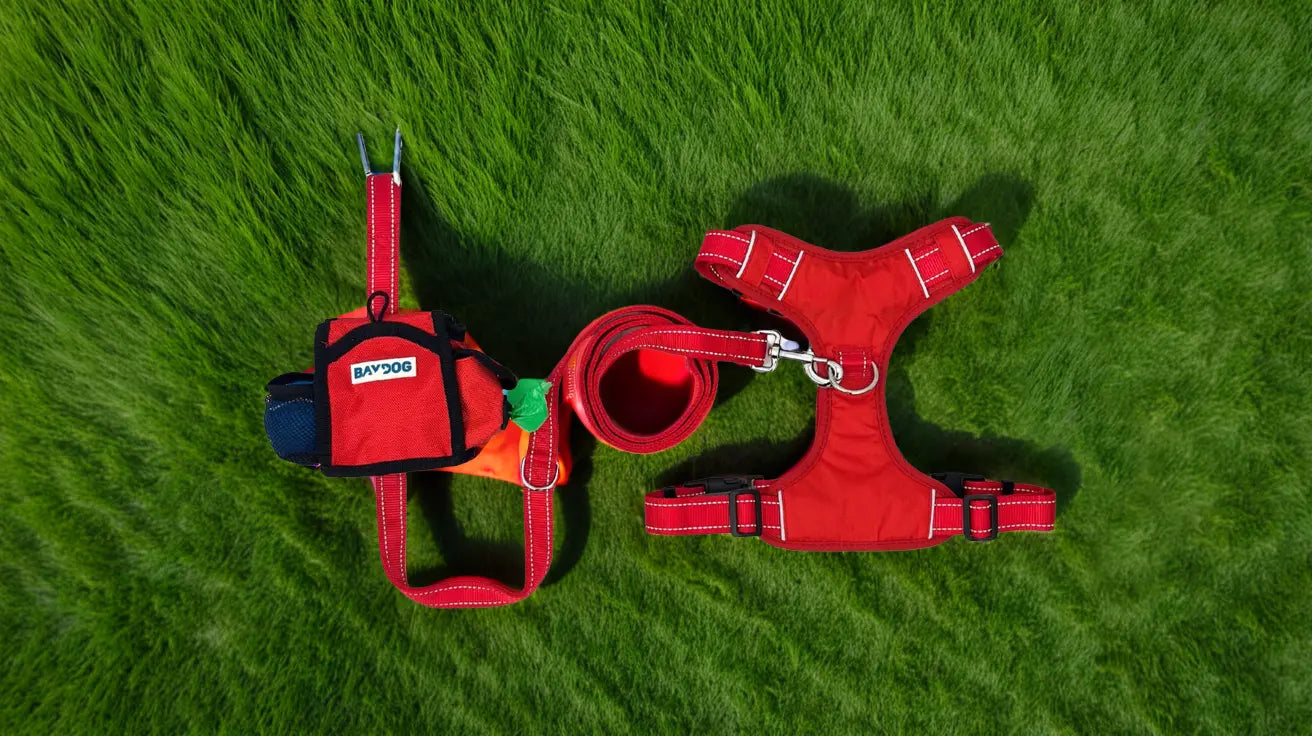12 TIPS FOR HIKING WITH YOUR DOG
We love hiking with our Canine Companions. That's one of the best things about sharing your life with a dog... always having a buddy available for hiking! Not only is it great exercise for both you and your dog, but being in nature can also be very therapeutic. Hiking can improve the bond between you and your dog, stimulate your dog's brain with plenty of sites and smells, and also score you some awesome pictures with your furry friend!
Sometimes finding the right hike, or remembering what to bring with you can get overwhelming. Check out these 12 tips for hiking with your dog to get you started.
1. HIKE IN YOU & YOUR DOG'S COMFORT LEVEL
Make sure you’re both in shape for your planned hike. The first hike of the season probably shouldn’t be 10 miles, uphill both ways! Your dog will follow you anywhere, but they can’t tell you when they're getting tired or if their paws are sore. Start with shorter, easier hikes to help your pal prepare for more strenuous activities.
2. FOLLOW THE RULES & REGULATIONS
Be aware of the rules and regulations in your hiking area. They are there to protect you, your dog, the wildlife, and other hikers. There are some places that are safe for off-leash hiking, but this is not the case everywhere, so please be considerate.
If you choose to take your dog off-leash in areas where it's allowed, it's good to follow some basic safety measures. Make sure your dog has a collar with an ID tag, like our Tampa Bay Embroidered Collar, and is microchipped; make sure your dog follows some basic obedience commands; and have plenty of treats available for a reliable recall if some wildlife or another dog shows up.
3. SIZE & FIT THE RIGHT GEAR
Make sure you have the right collar or harness, and a sturdy leash. Studies have shown that excessive pressure from a neck collar can damage a dog’s trachea (windpipe), so a walking harness may be a better choice for dogs that pull. Small dogs do exceptionally well with supportive harnesses, like our Liberty Bay Harness.
If you start to get really serious about hiking, including overnight backpacking trips, you can start considering backpacks and functional outdoor clothing. Remember, your dog will be wearing these all day, so just as you want comfortable fitting clothes, make sure all of these fit your dog properly. Our Saranac Pack is comfortable and convenient for a hike with your dog.

4. CLEAN-UP AFTER YOUR DOG
Make sure you bring some dog poop bags and always pick up after your dog. Not only is dog poop unhygienic and can build up quickly on high traffic trails, but it can be a source of disease and parasites for wildlife and water sources.
If you find yourself without a bag and your dog goes, make sure you bury it. This will aid decomposition and protect wildlife and water sources. The Pack-N-Go Bag helps to keep. your hands free & everything in one place while hiking with your dog.

5. REMEMBER WATER & HYDRATION
Bring water and a travel bowl for your dog; dehydration can be a serious problem. Stop often so your dog can drink (don't wait for them to tell you they're thirsty because they never will).
Some people let their dogs drink out of natural sources, but be aware of where you are and make a judgement about how clean the water is. Dogs can get waterborne pathogens from natural water sources, so make sure you're aware.
6. PROTECT FROM TICKS, FLEAS & MOSQUITOES
Biting insects can be annoying at best and carry disease at work, so make sure you're protecting your dog when you go for a hike.
- Ticks: Ticks are always an issue when hiking, so you have to be vigilant. Topical treatments can be helpful, but make sure you always check over your dog when you get back home (more on that later).
- Fleas: Dogs can get fleas from hiking, so make sure you're using preventatives and repellents. A flea collar will add some extra protection while on the hike.
- Mosquitoes: Most human mosquito sprays can be used on your dog, but protect the nose and eyes while you apply them. If you're out for a longer hike, you might need to reapply. Mosquitoes carry heartworm, so make sure you're paying attention to if your dog is getting bit. Dry landscapes will have less mosquitoes, but they can be an issue anywhere.
7. USE SUNSCREEN (FOR YOUR DOG, TOO!)
Of course you should wear sunscreen, but it may be needed for dogs with areas where the fur is thin and the skin is whitish or pink. These dogs can get easily sunburned, especially if you're in open spaces with a lot of sun, so be careful about excess sun exposure. Human sunscreen can be dangerous for dogs, especially if you apply it to their nose and they lick it off, so look for a dog specific sunscreen.
8. KNOW WHAT TO DO IN AN EMERGENCY
Know what to do in an emergency, such as a cut paw pad (which is more common than you might think!). Consider carrying a pet first-aid kit. Keep in mind where the nearest ranger station or emergency veterinary hospitals are located. Program a poison-control hotline and your veterinarian’s contact info into your cell phone.
9. BE AWARE OF THE HEAT
Heat can be an issue for any dog, but if your dog has a short nose (such as Pugs, Boston terriers, bulldogs, and Pekingese), try to avoid hiking with dogs during the heat of the day. These dogs have less surface area for heat exchange through their nose and mouth, the primary cooling mechanism in dogs. The same goes for extra-furry breeds such as Malamutes, Old English sheepdogs, or Collies, who can get overheated.
10. CONSIDER PAW PROTECTION
For dogs who love to run, dig or go off-trail, paw protection is a must. Well-made booties can protect your dog from torn pads, broken nails, burrs and thorns, and even ice in the winter time.
If your dog doesn't tolerate booties well, make sure you take the time to condition their paws before and after a hike. This can help strengthen the skin on their pads.
11. CHECK YOUR DOG AFTERWARDS
When you get home, always check your dog over for burrs, foxtails, debris, and most especially ticks (even if you’ve used a repellent). Ticks can carry diseases that you want to protect against. Make sure you remove them correctly. Foxtails in particular can work their way through the skin and cause abscesses and other serious injuries. Don’t neglect the paws: small stones and other debris can get caught between the toes.
Wiping your dog down with cleaning wipes can be a great way to freshen them up and also keep your eyes peeled for any bugs or burrs.
12. HELP YOUR DOG RECOVER & STAY HEALTHY
When you're feeding your dog after a long hike, remember they put in a lot of effort, so adjust their diet accordingly. Make sure to add some water to their bowl, too. No matter how much they drank on the hike, they can still use some extra hydration.
Get out there and explore with your Canine Companion!























